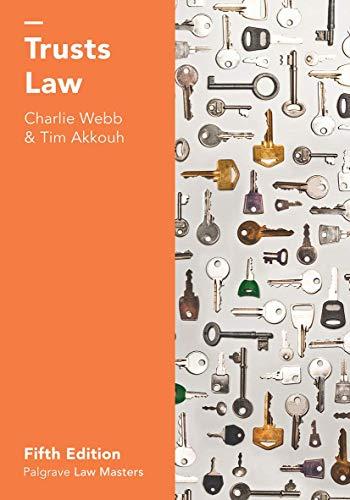Question
A. LEGAL ACTION MEMO TO THE BOARD. This is an objective memo and you must consider both sides. The memo should discuss, recommend, and advise.
A. LEGAL ACTION MEMO TO THE BOARD. This is an objective memo and you must consider both sides. The memo should discuss, recommend, and advise. The memo objectively informs a reader about what the law is. It illustrates what the outcome will likely be when the law is applied to a particular set of facts. You're not looking to persuade.
First, review the attachments. THE COMPLAINT IS ATTACHED.
Regarding Professor Younger's memo, it is attached only to be used as a guide. Ignore any suggested limitations on paragraphs and pages.
This assignment is a business memo to the Defendant's management teams, using the factual info provided in the attached complaint. Consider your memorandum to be one for the liaison between the management team and their outside legal counsel. You are not so amazingly literate in copyright (don't blame your eLaw professor) but still much more attuned to the law than a layperson or your direct report. Also, your direct report knows you are taking Entertainment Law now. The subject you must address is whether the plaintiff is likely to prevail or not on causes of action numbers 1, 2, and 3before a federal court based on the alleged facts provided and the law that you will research.
For your memo, you must turn to the Copyright Act, common law (i.e. cases), CAL. CIV. CODE 3344.1, and any other material using LexisNexis, Westlaw, Google Scholar, and the Internet. Remember, your authority for your reasoning comes from the law. You should state the issue(s), the applicable rules of law, and incorporate plenty of reasoning, essentially supporting and explaining your result. You may use as authority any appropriate case and statute. By the way, legal analysis is a skill set that is transferable across many careers.
More Advice:
The assumption that should generally be held when drafting business memos is that the reader is pressed for time. With this assumption, the following become the ideals of business writing:
- Concision
- Straightforwardness
- Compartmentalization
- Simplicity
The goal then is to write efficiently. Concision and straightforwardness keep the piece from being time-consuming. Simplicity and compartmentalization allow for the concepts being presented to be easily parsed and understood.
The former two call for short and uncomplicated sentences. This does not necessarily mean that the writing cannot be sophisticated; it merely asks that the writer keep the economy of words in mind. When examining one's business writing, a good metric is to ask whether the explanation presented is the quickest way to communicate the comprehensive point.
The latter two are a matter of being organized and keeping subject matters more or less discrete. Granted, concepts under one subject matter will entwine due to mutual relevance, but attempting to write in as compartmentalized a fashion as possible will allow for better flow in presenting information and better reception from the reader who has to connect the dots.
This typically manifests as laying out the direction of the memo. Often, business memos will have a summary and a brief paragraph at the beginning of the memo that outlines exactly the major points and recommendations that will follow.
This will also manifest in exposition and argumentation in that concepts and arguments will be broken down into their parts and then explained piecemeal. For example, explaining a contract might involve explaining the offer, consideration, and acceptance individually. Explaining how a client should handle a breach of contract suit might involve laying out the different potential defenses along with commentary on those defenses' viability.
Generally, business memos will first present facts and analysis as a large section and then recommendations and outlook based on that analysis. This will vary, of course, based on the purpose of the memo, but it is a good rule of thumb to follow.
Finally, bear in mind the knowledge base of the audience. If the audience already knows the subject matter, then there is no point in wasting time and space on explaining it again in depth. However, if the audience knows nothing at all about the subject matter, then a brief but comprehensive fact pattern should be provided. Assume the audience knows the facts.
Finally, here are issues that are more mechanical or stylistic, so to speak, to avoid:
Poor argument structure (unorganized, meandering, lack of or clunky transitions, lack of flow and clarity)
Poor economy of words/space (i.e., spending too much time explaining background details rather than digging into the legal analysis asked for)
Tone/formality mismatch (the prompt is professional/formal and should therefore have a response that follows that tone -- i.e., generally avoiding the first person, refraining from focusing on personal opinion instead of focusing on analysis, etc.) (It is worth noting that giving recommendations based on analysis and giving personal opinions can sometimes look similar but are not the same.)
Going too "broad" in argumentation instead of focusing on the legal analysis asked for
An argument in bad faith (character judgment, seemingly deliberate misinterpretation of one or the other side of the decision, attribution to malice, etc.)
Missing responses to parts of the prompt altogether
Technical errors (grammar, spelling, etc.)
link to documents: https://drive.google.com/drive/folders/1YZc4MraaoJJ3wz-Ce51F80aQrmJVDdKf?usp=drive_link
Step by Step Solution
There are 3 Steps involved in it
Step: 1

Get Instant Access to Expert-Tailored Solutions
See step-by-step solutions with expert insights and AI powered tools for academic success
Step: 2

Step: 3

Ace Your Homework with AI
Get the answers you need in no time with our AI-driven, step-by-step assistance
Get Started


